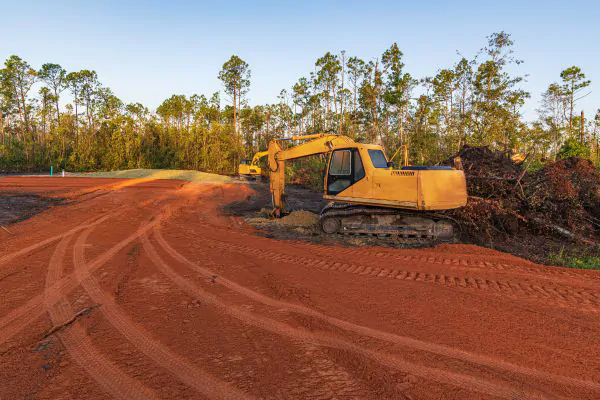Land clearing often gets a bad rap, conjuring images of bulldozers taming lush forests, harming ecosystems, or disrupting nearby communities. However, the narrative isn’t so one-sided. When used responsibly and managed with sustainability in mind, land clearing can catalyze progress, creating new opportunities for people, businesses, and the environment alike.
This post explores the less-talked-about benefits of land clearing, shedding light on how this practice, when done right, can pave the way for greener development and thriving communities.
What Is Land Clearing, Exactly?
Simply put, land clearing is the process of removing vegetation, trees, stumps, rocks, and other obstacles from a piece of land to make it usable for various purposes. These purposes might include agriculture, construction, or even environmental restoration. But contrary to popular belief, land clearing today is rarely about indiscriminate destruction. Sustainable land clearing practices aim to maintain a careful balance between progress and preserving the environment.
With that in mind, let’s explore the surprising ways land clearing can deliver value when approached as a long-term investment in both humanity and the planet.
Land Clearing Benefits You May Not Know About
1. Enhanced Agricultural Productivity
Land clearing has time and again proven essential for creating arable farmland. By removing rocks, roots, and shrubs that hinder efficient cultivation, farmers can optimize land use and expand food production.
This is especially beneficial in regions striving to improve food security or reduce dependence on imported produce. Thoughtful clearing doesn’t just prepare land for planting; it facilitates crop rotation, irrigation installation, and creates better conditions for soil aeration.
2. Promoting Natural Regeneration
It may seem counterintuitive, but responsible land clearing can foster environmental restoration. Dead and overgrown vegetation suffocates ecosystems, preventing sunlight and nutrients from reaching the forest floor. Removing invasive species and excess debris allows native plants and wildlife to reestablish themselves.
Organizations practicing sustainable land clearing often reseed cleared areas with indigenous plant species, preserving regional biodiversity while improving overall ecosystem health.
3. Mitigation of Fire Risks
Overgrown land covered with dry vegetation is a ticking time bomb for wildfires, especially in areas experiencing long periods of drought. Proactive land clearing serves as an essential fire prevention tool by removing dry, excess brush and flammable debris.
By creating firebreaks and clearing around homes or infrastructure, this measure can save lives, safeguard properties, and reduce the environmental devastation caused by uncontrolled fires.
4. Supports Infrastructure Development
Land clearing is an indispensable first step in building crucial infrastructure, from schools and hospitals to renewable energy projects like wind farms and solar power installations. Clearing land doesn’t just make space; it facilitates innovation and advancement, creating opportunities for people who depend on reliable access to these facilities.
At the community level, improved infrastructure fosters a better quality of life by providing access to essential services and creating new economic opportunities.
5. Boosts Local Economy and Job Creation
Land clearing projects, particularly those tied to construction or agriculture, can inject much-needed momentum into local economies. From site surveyors to heavy equipment operators, these tasks employ a range of skilled professionals.
The ripple effects don’t end in wages. Businesses benefit from cleared sites through increased manufacturing capabilities, enhanced logistics, and even greater real-estate opportunities.
6. Land Clearing for Renewable Energy
Renewable energy projects often rely on cleared land for placing solar panels, wind turbines, or geothermal plants. Having access to open, debris-free land ensures these systems can operate at maximum efficiency.
Clearing land to support renewable energy solutions aligns with sustainable initiatives, offering a greener alternative to traditional energy production methods. This win-win scenario highlights how responsible land clearing can actively support the global fight against climate change.
The Role of Technology in Sustainable Land Clearing
Advances in technology are helping professionals strike a balance between development and conservation. Innovative equipment and techniques like precision clearing and mulching allow land clearing efforts to laser-focus on minimal disruption.
Additionally, Geographic Information Systems (GIS) tools help identify the most suitable areas for clearing while maintaining soil fertility, water sources, and habitats for wildlife. These innovations make land clearing less invasive and more beneficial for both humans and nature.
Best Practices for Ethical Land Clearing
To maximize the benefits while eliminating the risks of land clearing, certain strategies are essential. These best practices include:
- Conducting environmental impact assessments before beginning projects
- Clearing selectively, favoring low-priority vegetation or invasive weeds
- Using mulching or chipping methods to repurpose cleared material into compostable products
- Rehabilitating cleared areas with native plants to restore soil stability and biodiversity
- Partnering with experts in sustainable land management for guidance
Ethical land clearing isn’t just possible; it’s the key to achieving long-term success without compromising future generations.
Paving the Way for Growth
Sustainable land clearing supports safer communities, boosts agricultural productivity, and creates development-ready sites without sacrificing environmental integrity. When guided by thoughtful planning and modern techniques, it becomes a catalyst for long-term ecological and economic progress.
Far from being an environmental threat, responsible land clearing helps minimize wildfire risks, restore soil health, and pave the way for clean energy infrastructure—all while preserving essential habitats when executed with care.
To fully realize these benefits, both public and private sectors must embrace strategies that balance human development with environmental stewardship. Because when innovation meets responsibility, land becomes more than space—it becomes opportunity.

















